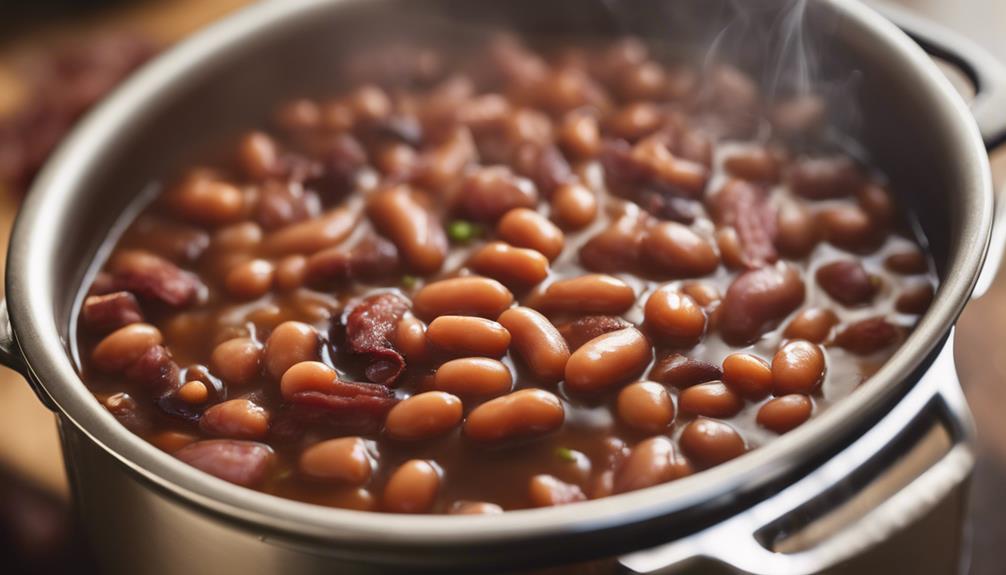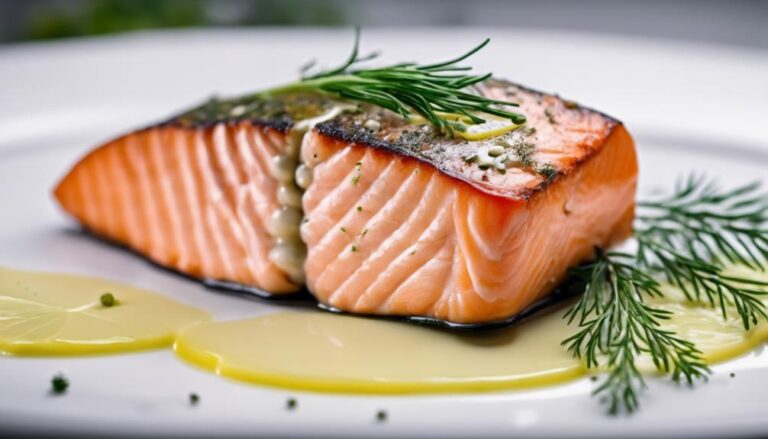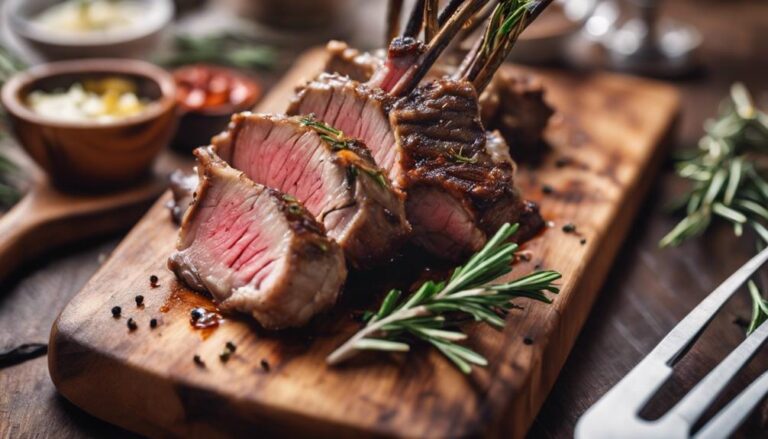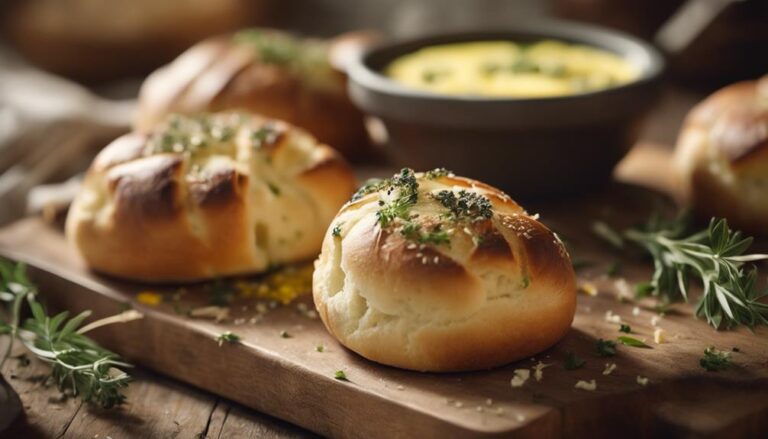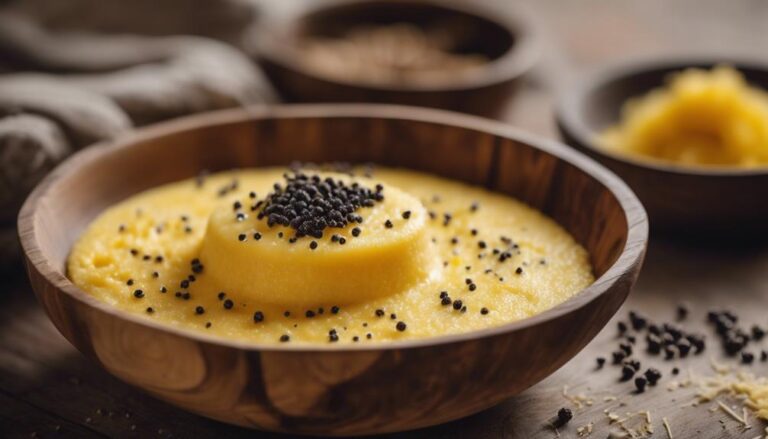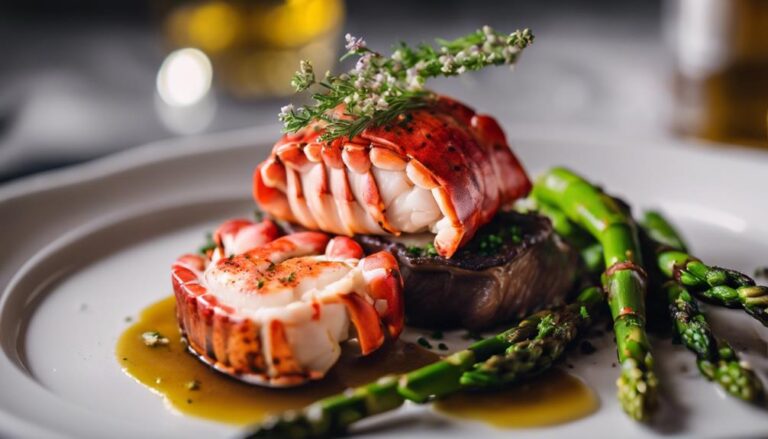Sous Vide Baked Beans
Get ready to elevate your baked beans with the sous vide method. Start by soaking beans like navy beans overnight for the best texture. Enhance flavors by sautéing aromatics such as garlic and onions before mixing with key ingredients like maple syrup and smoked paprika. Set your sous vide bath at 185°F for a slow, 10-12 hour cook for that perfect, creamy consistency. The gentle sous vide process infuses each bean with rich flavors, creating a harmonious taste profile. Your next level baked beans await, where every mouthful bursts with enhanced flavors.
What You Will Learn Here
- Sous vide method ensures gentle cooking for tender, flavorful beans.
- Infuse beans with spices and aromatics for enhanced taste profiles.
- Extended cooking time at low temp results in creamy texture.
- Consistent temperature cooking maintains bean texture.
- Sous vide allows beans to absorb flavors for a rich taste experience.
Bean Origins
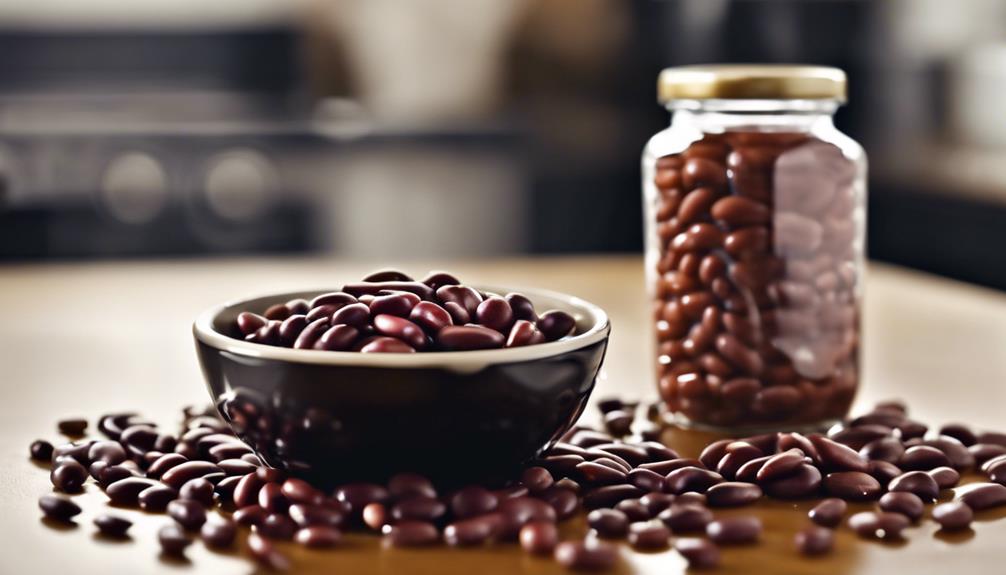
Bean origins play an important role in understanding the diverse world of legumes. Different bean varieties, ranging from kidney to navy beans, bring unique flavors and textures to dishes.
The growing conditions and historical significance of these beans further enrich their appeal in culinary traditions.
Bean Varieties
Originating from various regions around the world, a diverse array of bean varieties are used in cooking to add depth and flavor to dishes. Black beans, commonly used in Latin American cuisine, have a rich, earthy flavor and a velvety texture when cooked.
Kidney beans, originating from the Americas, are known for their robust flavor and smooth texture, making them a staple in chili recipes. Garbanzo beans, also known as chickpeas, are popular in Middle Eastern and Mediterranean dishes, offering a nutty taste and a slightly grainy texture.
Lentils, while technically a type of legume, are often categorized with beans due to their similar culinary uses. They come in various colors like green, red, and brown, each with its unique flavor profile. Pinto beans, commonly found in Mexican cuisine, have a creamy texture and a mild, nutty taste that pairs well with a variety of seasonings.
Growing Conditions
Exploring the various growing conditions of different bean varieties can provide valuable insights into their origins and unique characteristics. Beans, originating from various parts of the world, have specific environmental needs that influence their growth. For example, kidney beans thrive in warm climates with well-drained soil, making them a staple in regions like Central and South America. In contrast, black beans prefer cooler temperatures and fertile soil, leading to their cultivation in places like North America.
Pinto beans, known for their mottled appearance, require moderate sunlight and well-aerated soil to develop properly. They're commonly grown in regions with dry summers and mild winters, such as the Southwestern United States. Garbanzo beans, also called chickpeas, flourish in arid environments with sandy soil, making countries like India and Pakistan ideal for their cultivation. Understanding these growing conditions can help you appreciate the diverse origins of beans and the role geography plays in shaping their characteristics.
Historical Significance
Delving into the historical importance of beans reveals a rich tapestry of cultural and culinary heritage that spans centuries. Beans, one of the oldest cultivated crops, have deep roots in human history. Originating from Central and South America over 7,000 years ago, beans quickly spread worldwide due to their nutritional value and ability to thrive in various climates.
The indigenous peoples of the Americas, including the Aztecs and Incas, revered beans for their versatility and sustainability. Beans weren't only a staple food source but also played essential roles in religious ceremonies and cultural traditions. European explorers introduced beans like kidney and navy beans to the Old World, further diversifying bean varieties and culinary practices.
In Asia, beans such as soybeans have been cultivated for thousands of years, contributing significantly to Asian cuisines and dietary habits. African cuisines also incorporate a wide array of beans, reflecting the continent's diverse culinary landscape. Today, beans remain an essential component of global cuisine, celebrated for their taste, nutritional benefits, and historical significance.
Key Ingredients
To make delicious sous vide baked beans, gather the following key ingredients:
- Navy Beans: The foundation of any baked beans recipe, these small white beans are perfect for absorbing flavors and becoming tender during the sous vide process.
- Maple Syrup: Adding a touch of sweetness, maple syrup complements the savory elements and enhances the overall taste of the dish.
- Tomato Paste: Providing a rich and concentrated tomato flavor, tomato paste adds depth to the beans and helps create a robust sauce.
- Smoked Paprika: Infusing a subtle smokiness, smoked paprika elevates the dish with its unique flavor profile, enhancing the overall complexity of the baked beans.
When combined, these key ingredients work together to create a harmonious blend of flavors in your sous vide baked beans.
The navy beans offer a creamy texture, while the maple syrup balances the savory notes with a hint of sweetness. Tomato paste enriches the sauce, providing a robust base for the beans to simmer in.
Finally, the smoked paprika adds a layer of depth and complexity, elevating the dish to a new level of deliciousness.
Top Baked Bean Picks
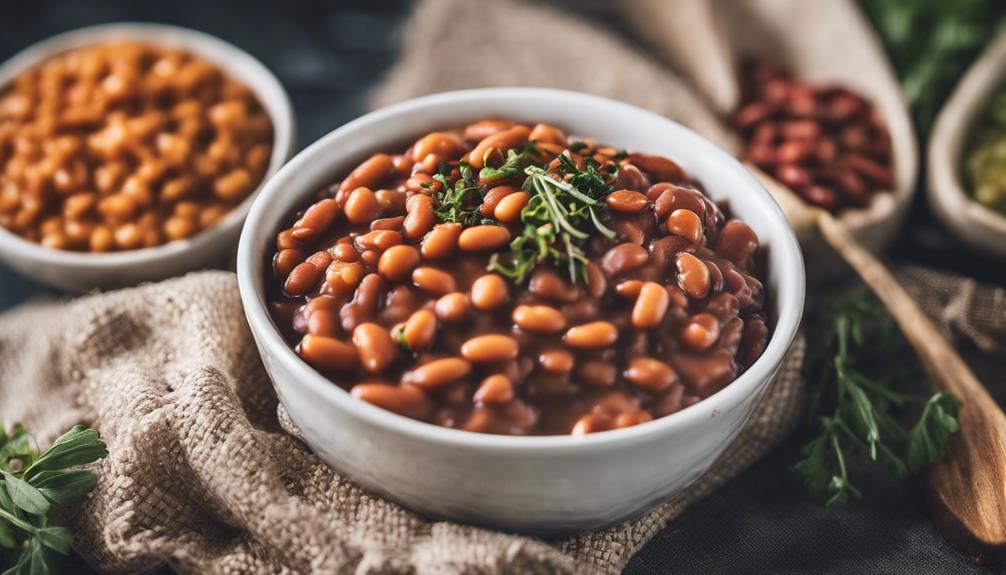
When it comes to top baked bean picks, consider trying out:
- Delicious Maple Baked Beans
- Maple Bourbon Baked Beans
- Special BBQ Baked Beans
These options offer a variety of tastes ranging from sweet and savory to tangy and bold, catering to different preferences.
Experimenting with these selections can elevate your baked beans game and add a delightful touch to your next meal.
Delicious Maple Baked Beans
Consider enhancing your baked bean experience with the delightful touch of maple syrup. Maple baked beans offer a perfect balance of sweetness and savory flavors that will elevate your dish to a whole new level. Here are some tips to make the most delicious maple baked beans:
- Select Quality Ingredients: Choose high-quality navy beans, pure maple syrup, brown sugar, and smoky bacon for a rich and flavorful base.
- Slow Cooking: Let the beans simmer gently to allow the flavors to meld together, creating a mouthwatering dish that's worth the wait.
- Adjust Sweetness: Taste as you go and adjust the amount of maple syrup and brown sugar to suit your preference for sweetness.
- Finish with a Maple Drizzle: For a final touch, drizzle a bit of maple syrup on top of the baked beans before serving to enhance the maple flavor and add a beautiful glaze.
Maple Bourbon Baked Beans
For a flavorful twist on classic baked beans, try incorporating maple syrup and bourbon into your recipe. Here are some tips to enhance your Maple Bourbon Baked Beans:
- Choose Quality Ingredients: Opt for real maple syrup and a good-quality bourbon to guarantee rich and authentic flavors in your baked beans.
- Balancing Sweetness and Depth: The maple syrup adds a sweet note, while the bourbon brings depth and complexity to the dish. Adjust the ratio of these ingredients to fit your taste preferences.
- Slow Cooking for Maximum Flavor: Allow the beans to simmer slowly, allowing the flavors of the maple syrup and bourbon to blend with the beans for a delicious result.
- Pairing Suggestions: Maple Bourbon Baked Beans pair well with grilled meats, such as ribs or chicken, adding a sweet and savory element to your barbecue spread.
Special BBQ Baked Beans
Get ready to elevate your barbecue game with these top picks for Special BBQ Baked Beans. When it comes to adding a flavorful and hearty side dish to your next cookout, these beans are sure to impress your guests.
Here are some must-try Special BBQ Baked Beans:
- Smoky Bacon BBQ Beans: Infused with the rich flavors of smoky bacon, these beans offer a perfect balance of savory and sweet notes that will complement any grilled meat.
- Spicy Chipotle BBQ Beans: For those who enjoy a bit of heat, these beans pack a punch with spicy chipotle peppers, adding a fiery kick to your barbecue spread.
- Honey Garlic BBQ Beans: Sweet and garlicky, these beans are a crowd-pleaser with their sticky glaze and aromatic garlic undertones that make them a standout side dish.
- Pulled Pork BBQ Beans: A hearty twist on the classic recipe, these beans are loaded with tender pulled pork, adding a meaty texture and extra layers of flavor to every bite.
Bean Preparation Suggestions
To prepare your beans for the sous vide method, start by soaking them overnight to guarantee even cooking.
Enhance the flavor profile by adding aromatics like garlic, onions, or herbs to the beans before cooking.
Adjust the cooking time and temperature according to the type of beans you're using for perfect results.
Soaking Beans Overnight
Consider soaking the beans overnight to enhance their texture and flavor before preparing Sous Vide Baked Beans. Soaking beans helps to soften them, reducing the cooking time and ensuring a more consistent texture. It also aids in breaking down complex sugars in the beans, making them easier to digest.
To soak the beans, start by rinsing them under cold water to remove any dirt or debris. Then, place the beans in a large bowl and cover them with water, ensuring that there's enough water to keep the beans submerged as they expand. Let the beans soak overnight or for at least 8 hours.
Adding Aromatics for Flavor
After soaking the beans overnight to enhance their texture and flavor, infuse your Sous Vide Baked Beans with aromatic ingredients to elevate their taste profile. Aromatics are key players in enhancing the overall flavor of your beans. Consider adding ingredients like diced onions, minced garlic, bay leaves, and fresh herbs such as thyme or rosemary. These aromatics bring depth and complexity to the dish, creating a more flavorful experience for your taste buds.
To incorporate these aromatics, you can sauté them in a pan with a bit of olive oil before adding them to the vacuum-sealed bag with the soaked beans. This step helps release their flavors and infuse them into the beans more effectively. Alternatively, you can simply add the aromatics directly into the bag with the beans for a subtler infusion.
Experiment with different combinations of aromatics to find the flavor profile that suits your preferences. Remember, the key is to balance the aromatics to complement the natural taste of the beans without overpowering them.
Cooking Time and Temperature
For best results, make sure the beans are cooked at a consistent temperature for an extended period to achieve a tender texture and flavorful outcome. When preparing sous vide baked beans, set your water bath to 185°F (85°C) for a cooking time of 10-12 hours. This slow cooking method allows the beans to soften gradually, absorbing the rich flavors of the sauce without becoming mushy.
Maintaining a steady temperature throughout the cooking process is vital to guarantee that the beans reach the desired level of doneness. By cooking them sous vide, you can control the heat precisely, resulting in perfectly cooked beans every time. The extended cooking time at a lower temperature helps break down the beans' fibers, resulting in a creamy texture while preserving their shape.
Final Thoughts
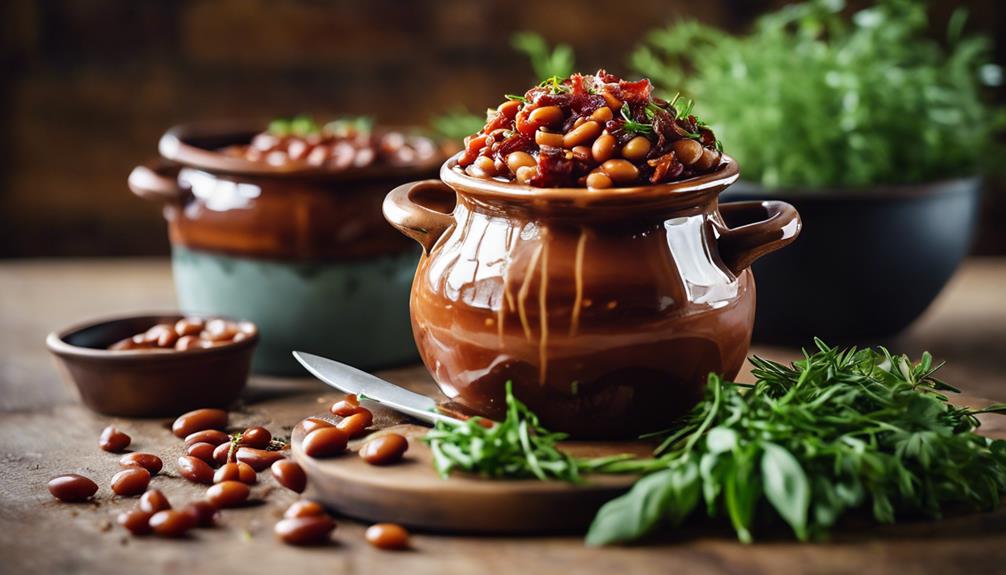
To wrap up your sous vide baked beans cooking experience, reflect on the flavors and textures that were enhanced through the gentle cooking process. The prolonged cooking time at a consistent low temperature allowed the flavors of the beans, spices, and sauce to meld together harmoniously, creating a depth of taste that traditional cooking methods might struggle to achieve. The beans themselves retained a firm yet creamy texture, with each bite offering a burst of flavor without being mushy or overcooked.
One of the standout benefits of using the sous vide method for baked beans is the way it infuses every bean with the rich flavors of the sauce. Traditional cooking on stovetops or ovens can sometimes result in uneven cooking, leaving some beans bland while others are overly seasoned. With sous vide, each bean is enveloped in the sauce, ensuring a consistent and delicious taste throughout the dish.
Furthermore, the sous vide process allowed the beans to absorb the flavors of the spices and aromatics slowly and thoroughly. This resulted in a more nuanced and complex taste profile, with layers of flavor that unfold with each bite. The gentle cooking process also helped the beans maintain their shape and integrity, giving you perfectly cooked beans in every spoonful.
Frequently Asked Questions
Can I Use Canned Beans for Sous Vide Baked Beans?
Yes, you can use canned beans for sous vide baked beans. Simply prepare the beans according to your recipe, seal them in a sous vide bag, and cook them in the water bath at the specified temperature and time.
How Long Can Sous Vide Baked Beans Be Stored?
When storing sous vide baked beans, make sure to refrigerate within two hours of cooking. Keep them in an airtight container for up to 4-6 days. Remember to reheat thoroughly before enjoying for best taste and safety.
Is It Necessary to Soak the Beans Before Cooking Sous Vide?
To get the best results when cooking beans sous vide, soaking them beforehand isn't necessary. The sous vide method guarantees that the beans cook evenly and retain their flavor without the need for pre-soaking, saving you time and effort.
Can I Add Meat to Sous Vide Baked Beans for Flavor?
Yes, you can add meat to enhance the flavor of your sous vide baked beans. Adding bacon, ham, or sausage can infuse the beans with a rich, savory taste. Just make sure the meat is cooked thoroughly before adding it to the beans.
What Other Dishes Can I Pair With Sous Vide Baked Beans?
Looking to elevate your meal? Think about pairing your Sous Vide Baked Beans with juicy pulled pork, tangy coleslaw, or fluffy cornbread. These combinations will surely satisfy your taste buds and leave you wanting more.
Conclusion
To sum up, sous vide baked beans offer a convenient and delicious way to enjoy this classic dish. By using precise temperature control, you can achieve perfectly cooked beans with rich flavors.
Experiment with different ingredients and seasonings to customize your beans to your liking. Whether you prefer traditional flavors or want to try something new, sous vide baked beans are sure to impress your taste buds.
Give them a try and elevate your bean game today!
